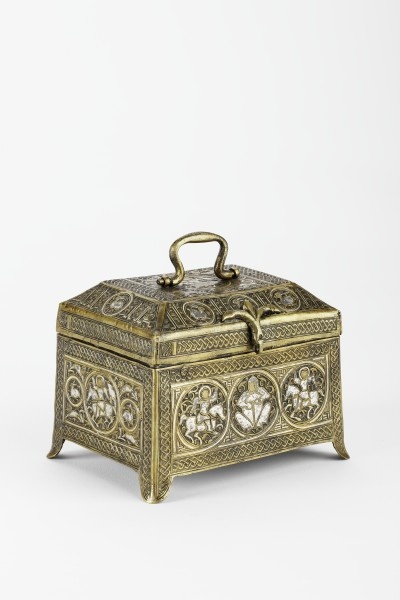Die älteste erhaltene Metallschatulle wurde im 10. Jahrhundert für den fatimidischen Kalifen al-Hakim angefertigt. Danach sind vergleichbare Schatullen erst wieder aus dem 12. bis 15. Jahrhundert bekannt. Entstanden sind diese Arbeiten im iranischen Raum, seit dem späten 14. Jahrhundert auch in Syrien. Das recht dünne Blech sowie der etwas schlicht gestaltete Dekor der Schatulle könnten auch für eine Nachahmung im 19. Jahrhundert sprechen. (Text: Reingard Neumann)
Schenkung von Ph. Walter Schulz, Berlin, 1907. 1898 in Isfahan erworben.
en

